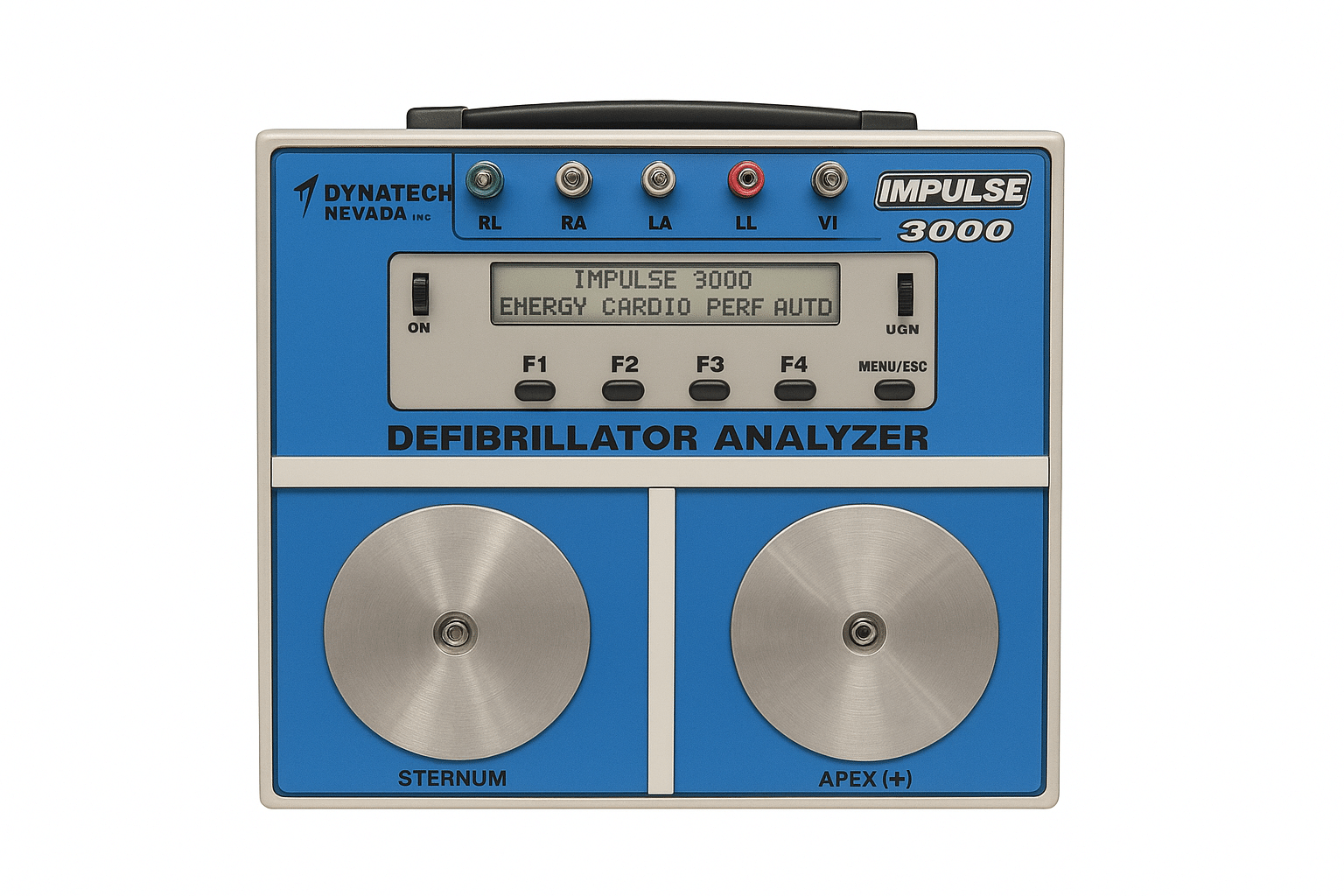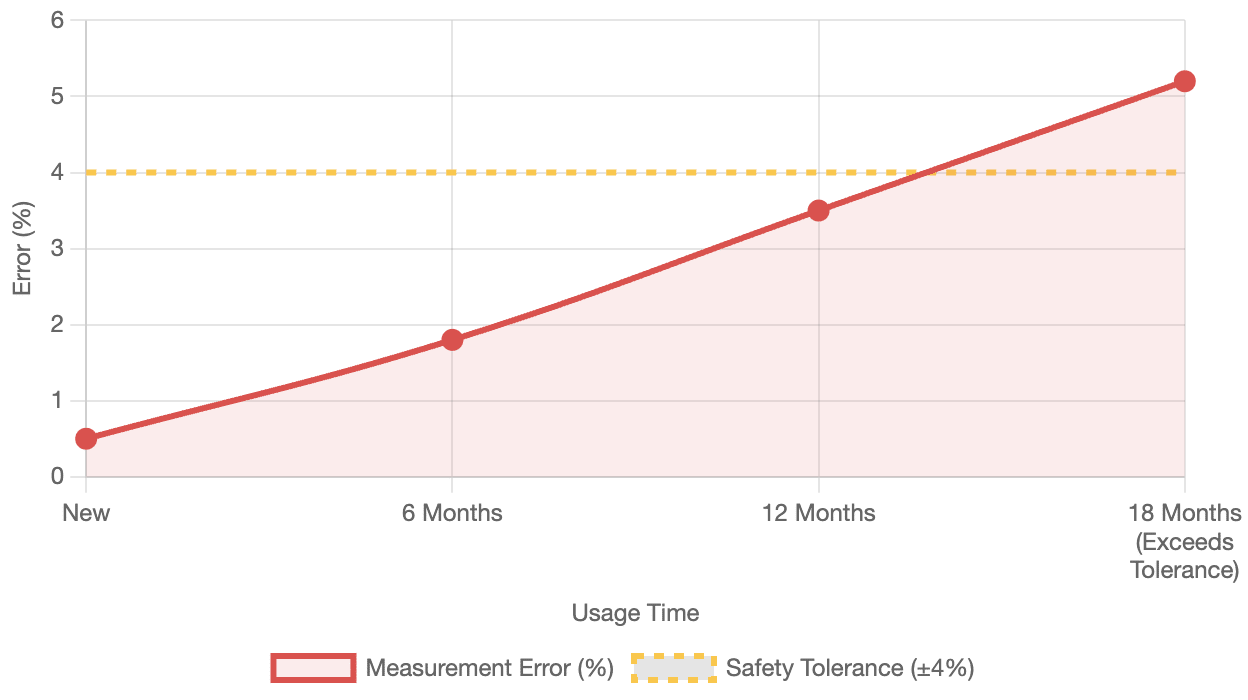Defibrillator Analyzer: Ensuring Life-Saving Precision in Healthcare – The Vital Role of Calibration
In emergency healthcare, the Defibrillator stands as a critical life-saving device. Medical professionals use it to deliver an electrical shock, restoring normal heart rhythm for patients experiencing cardiac arrest due to ventricular fibrillation. The precise delivery of energy and timing of the discharge are crucial factors determining patient survival. A Defibrillator Analyzer is a dedicated tool designed to verify and test the performance of these life-saving devices, ensuring their optimal readiness. The analyzer’s primary function involves measuring and recording electrical pulse output parameters. Therefore, regular Defibrillator Analyzer Calibration is an essential and life-critical requirement. It ensures this life-saving equipment operates accurately, complies with international medical standards, and most importantly, protects patient lives.
1. What is a Defibrillator Analyzer?

A Defibrillator Analyzer is a specialized measurement and testing device. It simulates the human body’s biological load to check the defibrillator’s performance. Essentially, it acts as a “dummy patient” the defibrillator can shock.
Key Functions of the Analyzer
Shock Energy Measurement
Verifies the defibrillator delivers the precise energy level (Joules) that was set.
Waveform Analysis
Ensures the electrical pulse waveform (e.g., Biphasic) adheres to specifications for optimal efficacy.
ECG Simulation
Creates abnormal heart rhythm scenarios to test the device’s diagnostic capability and response.
Charging Time Measurement
Checks the device’s charging speed, a critical factor in emergency situations.
Battery Test
Evaluates battery capacity and performance to ensure the device is always ready for operation.
Impedance Load Test
Simulates patient body impedance to ensure the device delivers stable energy.
2. Core Applications of the Defibrillator Analyzer
The Defibrillator Analyzer is a crucial tool in emergency medical departments, emergency rooms, and Biomedical Engineering Departments.
2.1. Electrical Pulse Performance Testing
This is the most critical application, verifying the accuracy of the energy delivered.
- Energy Output Measurement: The analyzer precisely measures the actual energy discharged. It then compares this to the set energy. This is true for both automated (AEDs) and manual defibrillators.
- Waveform Analysis: The analyzer records and displays the waveform. Moreover, it measures critical parameters like pulse duration and tilt. This guarantees accurate pulse delivery, maximizing treatment success.
- Settings Accuracy Check: This verifies that the energy dials (e.g., ) match the actual energy discharged.
2.2. Pacing Function Testing
For defibrillators with temporary external pacing capabilities:
- Pacing Current Measurement: The analyzer confirms the current delivered to the patient is correct (in ).
- Rate and Pulse Width Measurement: It checks the pacing rate and the delivered pulse width.
2.3. ECG Monitoring Function Testing
The analyzer can simulate various ECG waveforms:
- ECG Sensitivity and Accuracy Check: It generates standard waveforms to check if the defibrillator recognizes and displays the ECG signal correctly.
- Synchronization Check: For synchronized cardioversion, the analyzer tests the defibrillator’s ability to discharge precisely on the ECG’s R-wave peak.
2.4. Electrical Safety Assurance
- Leakage Current Testing: The analyzer measures the defibrillator’s leakage current. This ensures the device is safe and poses no electrical shock risk.
- Load Resistance Measurement: It simulates the body’s resistance, ensuring the defibrillator works correctly under real-world conditions.
3. The Vital Role of Defibrillator Analyzer Calibration
The analyzer acts as the only standard for checking a life-saving device’s reliability. If the analyzer is wrong, all tested defibrillators will be wrong, directly threatening patient lives.
The Critical Role of Calibration
An uncalibrated analyzer produces incorrect results, leading to a potentially harmful defibrillator being put into use. This is an unacceptable risk.
Accuracy Drift of the Analyzer
Error increases with time — exceeding ±4% tolerance after 12 months.

Consequence of 5% Energy Error
A small calibration drift reduces actual energy delivery, risking patient survival.

3.1. Ensuring Consistent Accuracy
- Preventing Measurement Errors: Internal parts of the analyzer can drift over time and temperature, causing errors in Joule readings. Therefore, calibration adjusts for these errors, guaranteeing the analyzer reads energy output correctly.
- Measurement Traceability: In addition, calibration by an accredited lab ensures the analyzer’s results trace back to national standards (NIST, SI units). This meets the strict needs of the medical industry.
3.2. Compliance with Medical and Legal Standards
- FDA and Regulatory Compliance: Health organizations strictly require periodic performance checks for life-saving equipment. Thus, using a calibrated analyzer provides legal proof that the facility followed all needed steps.
- International Standards: The analyzer must meet specific technical standards (e.g., IEC 60601-2-4). Calibration ensures the device operates correctly under these rules.
3.3. Optimizing Treatment and Patient Safety
- Ensuring Accurate Therapeutic Energy: For example, if the analyzer is wrong (reporting but only was delivered), the patient won’t get enough energy, leading to failed resuscitation.
- Preventing Injury: Conversely, discharging too much energy can cause unnecessary heart damage. Calibration guarantees the dose is always exact.
Consequences of Neglecting Calibration
Patient Harm
Delivering a shock dose that is too weak or too strong can lead to failed resuscitation or cardiac injury.
Legal Non-Compliance
Ignoring calibration violates mandatory IEC and AAMI standards, exposing institutions to serious legal risk.
Investment Waste
Failure to detect device drift early shortens lifespan and reliability of critical, high-value equipment.
Calibration Schedule: When and Why?
Calibration is not only a yearly requirement but also a necessary reaction to key operational events to maintain metrological traceability.
Frequency Breakdown
Most analyzer issues arise over time, making routine checks paramount.
Event-Triggered Calibration
🗓️ Annual Routine Check
The standard regulatory requirement. Prevents long-term accuracy drift.
🛠️ After Major Repair or Maintenance
Any internal component change or software update requires immediate verification.
📉 After Significant Operational Shock
If the device is dropped, subjected to extreme temperatures, or experiences electrical surge.
❌ Upon Receiving Out-of-Tolerance Readings
If the analyzer gives inconsistent or questionable readings during a standard device check.
Conclusion
The Defibrillator Analyzer serves as the primary tool that ensures the defibrillator—the most critical life-saving device—consistently operates at peak performance. It not only measures energy, waveform, and synchronization functions, but also provides definite proof of their accuracy. As a result, healthcare professionals can trust the device’s reliability in real emergencies. Defibrillator Analyzer Calibration is the highest level of quality assurance. It’s not just about following a rule; it’s a commitment to responsibility and ethics. This ensures that when a life depends on that device, it performs with total accuracy.



